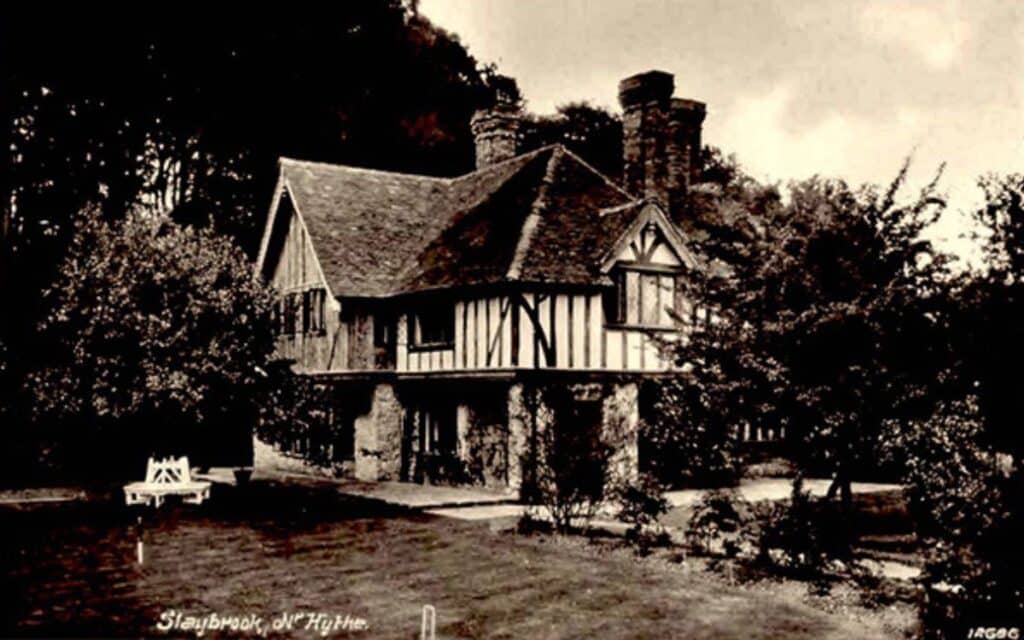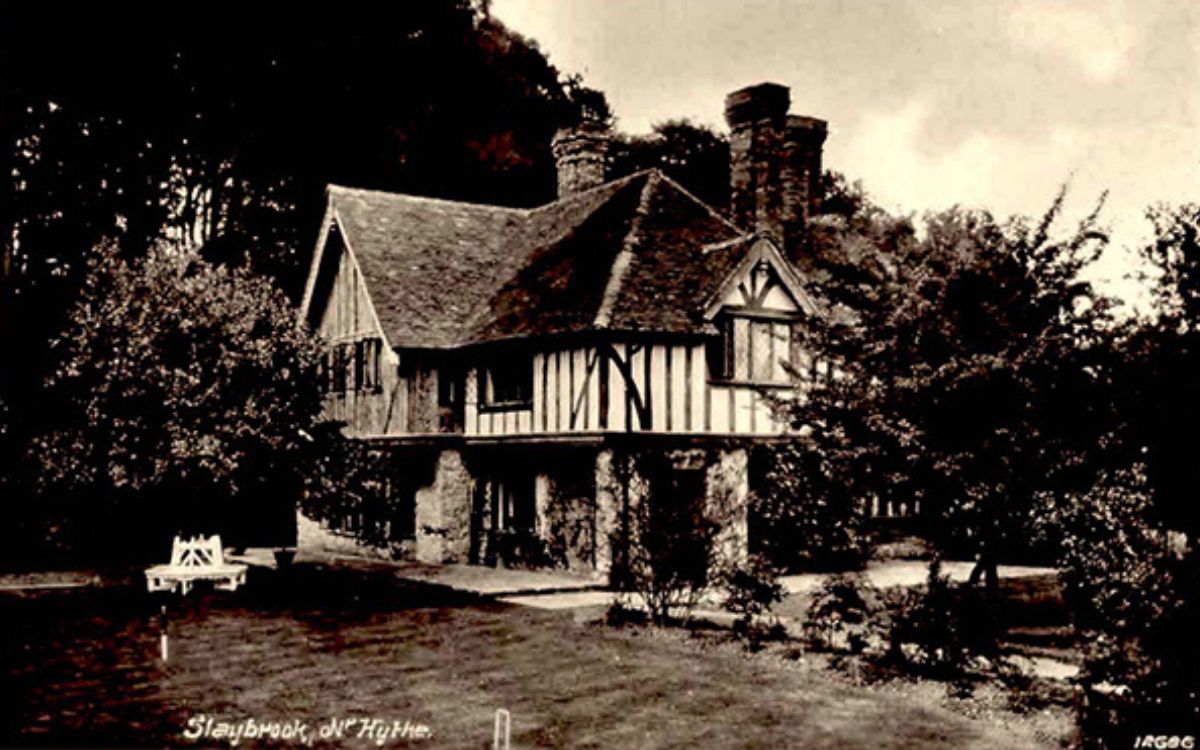Slaybrook Hall’s legends and horrors hark back thousands of years, making it one of Kent’s most disturbing haunted houses, writes RICK HALE

The history of Britain is one that is soaked in the blood of countless generations.
Great battles have been fought on this ancient land; conquerors have come and gone, and often the innocent paid the price with their lives.
Along the south-east coast of England is the modest village of Saltwood in Kent. A town of ancient buildings and friendly neighbours
But also found here is stately Slaybrook Hall. A seemingly innocent manor house with a dark history stretching back millenia to a time when Romans ruled the land and a bloody genocide gave the house its unique name.
History of Slaybrook Hall
The lovely house we see today was built sometime in the 1200s and was used as the setting for the film adaptation of Noel Coward’s comedic masterpiece, Blithe Spirit.
But it’s what happened in its prehistory that gave it its name and is quite possibly responsible for the ghostly manifestations that have been witnessed there for centuries.
The Brook Ran Red
Centuries before the foundation of Slaybrook Hall was laid, the land was home to a tribe of ancient Britons.
They lived out a relatively peaceful existence, tending to their fields and their farms, that was, until the arrival of the Romans.
When the mighty armies of Caesar arrived, the Britons fled into the surrounding woods to avoid being occupied by the invaders.
Although they left their homes and everything they loved, this ancient tribe came together, learned to fight, and decided to make the lives of the occupiers as difficult as possible.
As Roman wagons and citizens walked the road between modern Canterbury and Lympne, the villagers would suddenly swoop down from the trees and violently rob the wagons.
Sounds a bit Robin Hoodesque, I know, and like the Sheriff of Nottingham in the much-loved stories, the Roman commanders were less than thrilled.
Two legions were dispatched into the region with strict orders to hunt down the villagers and wipe them out. What came next was nothing short of genocide.
The soldiers took their job a little too seriously; every last villager, man, woman, and child fell to the blade of the Roman legion. No one was spared.
With the villagers slaughtered, the soldiers then burned every home and farm to the ground.
It’s said the slaughter was so great that the brook that ran alongside the village ran red with the blood of the villagers, innocent and outlaw alike.
This grisly and horrific act resulted in the area and the house’s name, Slaybrook.
The Assassination of Thomas a Becket
According to legend, the wholesale slaughter of the villagers wasn’t the only treacherous act to occur on the grounds of Slaybrook Hall.
The knights who assassinated Thomas a Becket, Bishop of Canterbury, allegedly hid out at Slaybrook after murdering the great man.
The Curse
But what of the ghosts said to haunt Slaybrook Hall? Surely, they must have their origins in this brutal act. I assure you, they do.
According to legend, as the village chief lay dying, he placed a curse on the land, the Romans, and all future generations that would live upon this bloodstained land.
The chieftain proclaimed that all future generations would be reminded of the heinous act by the restless souls of those he perished there well over a thousand years ago.
According to eyewitnesses, the month of December is the best time to see these lost souls.
Strange lights believed to be the ghosts of the villagers are seen on the grounds and in the trees surrounding the house.
People have commented that these lights appear to have intelligence as they wander the grounds forever, living out the horror that brought their lives to an end so long ago.
A Dark and Dangerous Figure
The image of a figure, dark as night, has been glimpsed lurking about Slaybrook Hall and its gardens.
The figure seems to step from the shadows and confront people before vanishing. Leaving behind a sense of dread.
It’s believed this figure is the ghost of the night who murdered Becket and is forced to wander the halls to atone for his grievous sin.
Sound Of Soldiers
Lastly, the ghostly lights aren’t the only reminder of the ancient murders that gave Slaybrook Hall its gruesome name.
The smokey image of marching Roman soldiers has been seen and heard making their way to Slaybrook Hall with swords drawn and a look of grim determination written all over their stoney faces.
These phantoms could only be the legions who carried out the genocide so long ago.
Over the years, Slaybrook Hall has gone on the market a number of times, with ownership changing hands frequently. I can only speculate why.
Have you been to Slaybrook Hall? Tell us your experience in the comments section below!




I lived in slaybrook hall ive heard and seen many ghosts
Hi Shirley, thanks for this – what other things have you heard?